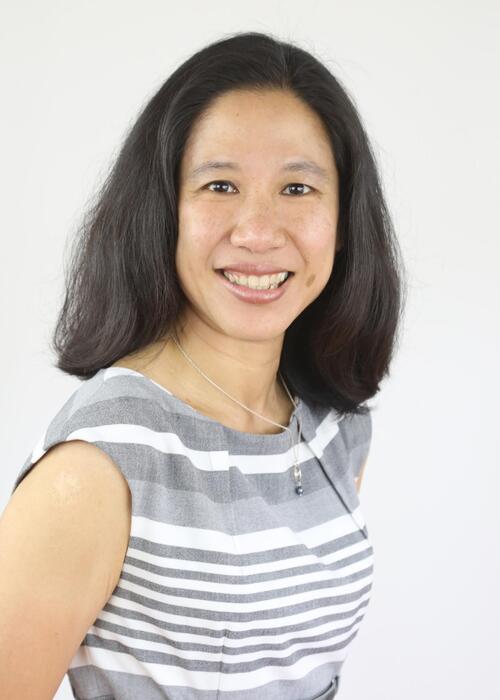
Math is the new microscope
Waterloo researcher is bridging math and medicine to develop future scientists

Waterloo researcher is bridging math and medicine to develop future scientists
By Ryon Jones Faculty of Mathematics
Anita Layton
Associate Dean, Research and International, Faculty of Mathematics
> Canada 150 Chair in Mathematical Biology and Medicine
Breakthroughs in technology and computing are changing the way researchers approach medicine. Early scientists wielded the revolutionary tools of their time, such as the microscope, to understand human health. Today, researchers increasingly use math as a microscope to understand biology and medicine, dictating the need for scientists to navigate between the worlds of computations and medicine comfortably.
Inspired by the unfortunate fact that diabetes runs in her family, University of Waterloo professor Anita Layton is one such scientist. She uses her interdisciplinary background to find better drugs for people who have diabetes and other diseases.
“The discovery of the microscope in the late 17th century revealed otherwise invisible processes and revolutionized biology,” Layton says. “Now, mathematics has the potential to do the same.”
Layton, the Canada 150 Research Chair in Mathematical Biology and Medicine, holds positions in applied mathematics, computer science, pharmacy and biology. Her research team engages in interdisciplinary research, building computer models to simulate the effects of various drugs and applying mathematical techniques to analyze clinical data.
Layton and a group of fellow researchers are currently working to prevent the development of complications associated with diabetes. They want to limit the impact of problems caused by diabetes, then try to prevent the complications altogether — and hopefully one day, take steps toward preventing the disease.
In one project, her team simulated the effect of a new diabetes drug that lowers blood sugar levels by increasing glucose excretion by the kidney. This simulation allowed them to explain why that drug lowers not just blood sugar but blood pressure as well, even among patients whose blood sugar fails to drop enough because of impaired kidney function.
In another project, Layton’s team developed separate blood pressure models for men and women, and used model simulations to show how (and why) some different blood pressure medications are more effective for men, and some are more effective for women.
“Animal experiments and clinical trials can tell us whether a drug works or not. Computational models can explain why that drug works,” Layton says. “Furthermore, through the combination of computational modelling and machine learning, precision medicine will become increasingly more common. For this to become a reality, we need a new generation of scientists well versed in both computations and biology.”
Precision medicine allows doctors to select treatments that are most likely to help individual patients based on a genetic understanding of their disease. The ultimate goal is, for example, to glean from the genetic makeup of a patient with diabetes what complications will befall that patient. Will they develop retinopathy or diabetic nephropathy, or will they need a foot amputation?
As associate dean, research and international, in the Faculty of Mathematics, Layton has encouraged her math and computer science colleagues to apply their expertise to medicine. She works with the Office of Research at Waterloo to host industry mixers, in part to facilitate partnerships between Waterloo math researchers and the health industry.
Layton also makes sure her graduate students develop into outstanding mathematicians whose research is grounded in real biology. The students interact with Layton’s collaborators, many of whom are physiologists and clinicians. Open questions in biology or medicine motivate the students’ research projects, and they present their research findings at conferences.
“It’s important that the next generation of scientists have the know-how of computational techniques, skills and the necessary knowledge of medicine,” Layton says. “Math and medicine are not a natural intersection, so we need more specialized training programs to produce the future generation of scientists who can comfortably walk in the computational world and the medical world.”

Read more
After early success with pro sports teams in the U.S., Penta Medical’s CEO returns to Canada to grow her HealthTech company

Read more
Qidni Labs is building an artificial kidney with the hope of dramatically improving survival rates for patients with kidney failure

Read more
When doctors wanted the best outcomes, they called on math researchers at Waterloo
The University of Waterloo acknowledges that much of our work takes place on the traditional territory of the Neutral, Anishinaabeg, and Haudenosaunee peoples. Our main campus is situated on the Haldimand Tract, the land granted to the Six Nations that includes six miles on each side of the Grand River. Our active work toward reconciliation takes place across our campuses through research, learning, teaching, and community building, and is co-ordinated within the Office of Indigenous Relations.